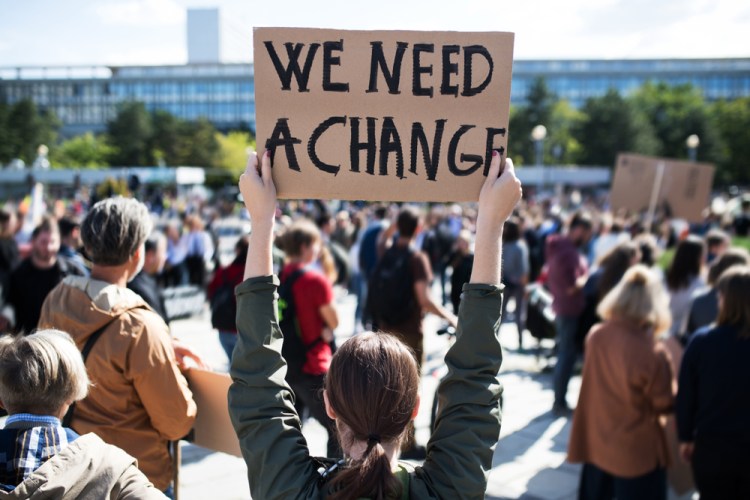Writing a good story isn’t just about the worldbuilding, or even the plot. The characters are a crucial component, because if you don’t love a character with all your heart, or despise a character with every fiber of your being, then where is the motivation to keep reading?
Characters need to be well-written for your story to succeed. That doesn’t mean they need to be good, and that’s the sticking point: how do you write believable antagonists that your readers will feel some type of way about? How do you do a good job writing a “bad guy?”
I’m here to (hopefully) answer those questions, by providing different things to consider when writing your villain/antagonist.
Let’s begin.
Give Them a Cause
Everyone is the hero of their own story. It’s very unlikely that you will find a (well-written) villain who doesn’t have a good reason for being the way that they are. The question is: what made them take the path they took? What makes them so at odds with the protagonist, and is it possible that they can have redemption if only they can see the light?
When I think of well-written antagonists, I often think of Killmonger from Black Panther. He’s the antagonist of the movie and clearly at odds with our beloved Black Panther, T’Challa. But we see and understand his perspective even if his approach may seem like an extreme to most. He’s not evil. He’s not a monster. He just sees and has endured years of injustice and wants liberation for his people.
Try to put yourself in your antagonist’s shoes, and ask yourself what their motivation is and whether your reader can sympathize with it regardless of the actions of the character.
Keep in mind, though, that just because an antagonist has their own perspective, their own reasons for doing what they do, it does not make it right.
Take a pure evil character, usually horror characters like Jason from Friday the 13th or Freddy from The Nightmare on Elm Street. They are both pure evil. That’s their thing. They have no valid reasons for doing the evil things they do, but that’s part of what makes them so scary: their complete disregard for human life, and their single-minded thirst for blood and death. They are not just antagonists to our plucky teen protagonists—they are evil given form. They are antagonists and villains.
Remember That Antagonist ≠ Villain
Going off of the previous point, when writing an antagonist, it’s important to keep in mind that an antagonist is not necessarily the same thing as a villain. Not every protagonist is the “good guy” and not every antagonist is the “bad guy.” The point is that they are diametrically opposed, and the only difference between a protagonist and antagonist is that one is the character we follow, while the other serves as the story’s greatest obstacle.
Think of an antagonist as an “anti-protagonist;” they are the person or thing most in the way of your protagonist achieving their goals.
The antagonist doesn’t even need to be a person. It can be any number of things (or people): a storm, a bear, the protagonist’s mom, maybe even the protagonist themselves.
For example, in Jaws, the main antagonist is the shark. It’s just a shark. A very angry and very big shark, but a shark nonetheless. It isn’t villainous; it’s just doing what sharks do. Very, very well.
Hell, it’s entirely possible that your protagonist is the villain, and the antagonist is the hero trying to save people from the protagonist’s wrath.
Lately there’s been a lot of fairytale retellings, and many of them are a great example of rewriting the story to give us the villain + antagonist’s perspective. In Heather Walter’s Malice, Alyce is not a villain, but her very existence makes her a target of the “good guys,” the archetypal fantasy heroes. These “heroes,” though, are not heroes at all, nor are they the protagonists. Alyce is.
Don’t limit your storytelling based on who you think has to be morally good or bad. Any number of things can cause a conflict: misunderstandings, prejudice, ignorance…and all of these things make it possible for your antagonist and protagonists to do great good or great evil.
Give Them a Backstory
One of the biggest mistakes I see writers make is that they focus all their energy on giving their protagonist a complex and meaningful backstory, but they fail to do the same for the antagonist.
No matter how evil or villainous your antagonist may be, they got that way for a reason. You don’t need to give us a massive exposition dump detailing every sad detail about your antagonist’s past, but chances are, if your antagonist has a reason for doing the things they’re doing (no matter how atrocious those things are), there’s something in their past that lets us know how they came to oppose your protagonist so strongly.
Write Understandable Misunderstandings
My own experience talking to different people from different walks of life has meant that I’ve often been put in the middle of altercations. It’s like being a centrist, but less annoying.
As mention in Ruth’s Mottram’s excellent piece on the power of words, we all have our own subjective frame of reference for how to interact with the world. It’s intention vs. impact. All of our intentions collectively may be pure and well-meaning, but that doesn’t change the impact of the things we do.
Maybe both your protagonist and antagonist want to make the world a better place. They respond to the situation using their frame of reference, which may be drastically different. So even though they both have the same intentions, their actions and the impact of those actions may differ, causing wires to cross and the characters to clash. Now, both characters believe the other is out to destroy the world, not make it better.
If your intentions are the same, but the impacts are different, you will oppose each other. And humans are fickle, stubborn creatures—we don’t like what we don’t like, so when someone takes action in a way we don’t agree with (or, worse, action that impacts us negatively), we think negatively of both the action and the person who took that action.
You can have the purest intentions imaginable, but people will perceive you based on your impact, not what’s in your heart. Write a protagonist and antagonist who both want to address a problem, and have them take different positions on how to handle that problem. Intention vs. impact.
Let Them Show Weakness
Nobody ever wants to show weakness. People have started literal wars because of their pride, all because we live in a world where proving yourself a flawed human who can make mistakes is one of the worst things you can do, worthy of shame and ostracization.
I, for one, prefer a character who has flaws. Who is, deep down, a sensitive person who just wants to be loved and wanted. Even the worst, most despicable people you can think of probably think themselves the hero of their story, and has taken the road they’ve taken because they’re afraid of seeming weak.
Show us those moments. Let the mask slip, even if just for a second. Let your antagonist/villain grieve, rage, do something embarrassing, make a silly blunder, anything that makes them seem like a relatable human.






